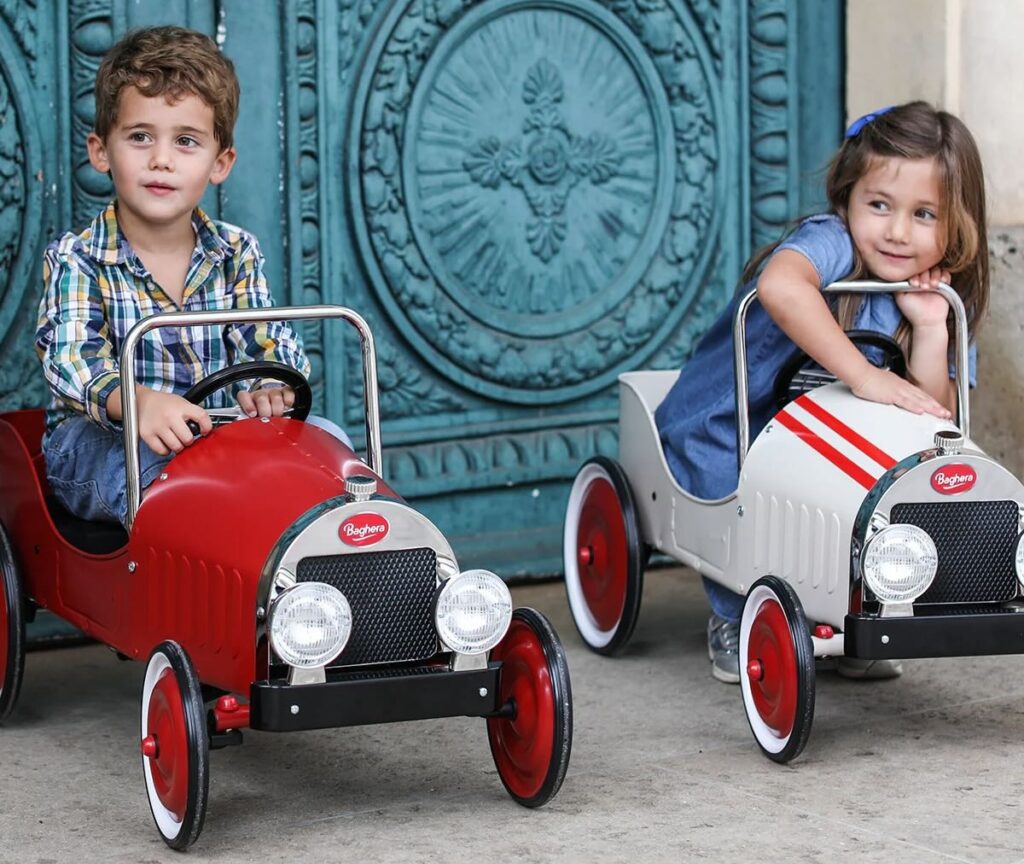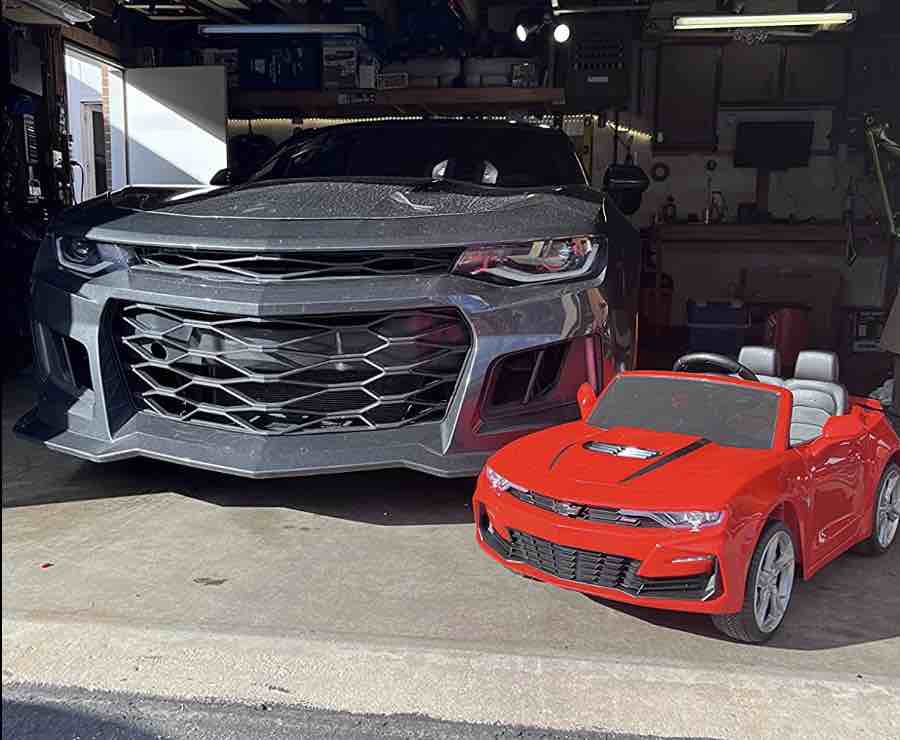When choosing a toy vehicle for your child, you might find yourself debating between a ride-on car and a pedal car. Both options are fun, promote outdoor play, and offer great developmental benefits, but which one is the better choice for your child?
In this article, we’ll explore the advantages of each type, helping you make an informed decision about what’s best for your family. If you’re new to the world of kids’ ride-on cars, make sure to check out our guide for a deeper dive into the options available.
Ride-On Cars: A Modern Thrill for Kids
Ride-on cars, especially the electric ones, have surged in popularity in recent years. These mini-vehicles are available in an array of models, from sports cars to trucks, and are often equipped with high-tech features like LED headlights and MP3 players. If you’re in the market for a comprehensive comparison, take a look at this article on the best RC car brands to get an overview of leading manufacturers.
Pros of Ride-On Cars
- Ease of Use for Younger Kids
- Electric ride-on cars are motorized, allowing even toddlers to enjoy the fun. They feature push-button start mechanisms and parental remote controls, making them ideal for younger children. According to a study from Parents.com, ride-on cars can foster independence and self-confidence in toddlers as they explore the world on their own terms.
- Wide Range of Features
- Ride-on cars often include a wide range of high-tech features, from working headlights to sound systems. Many models are licensed replicas of popular car brands like Mercedes-Benz and Jeep.
- Built-in Safety Features
- Most ride-on cars come with safety measures, such as parental remote controls, seat belts, and speed limits, which can ease concerns for parents. For families with younger children, these features ensure a safer riding experience compared to traditional pedal cars. The National Highway Traffic Safety Administration (NHTSA) also recommends keeping children’s vehicles under certain speed limits to ensure safety during play.
Cons of Ride-On Cars
- Less Physical Activity
- Ride-on cars can be less physically engaging for children, as they only require minimal effort to operate. Unlike pedal cars, which promote muscle development through pedaling, ride-ons can limit opportunities for physical exertion.
- Battery Limitations
- Ride-on cars rely on rechargeable batteries that can offer 1-2 hours of continuous play before needing a recharge. This can be frustrating for kids who want extended playtime. Consumer Reports points out that some lower-quality models may suffer from poor battery life, so be sure to read reviews before making a purchase.
For those who want more detailed insights on different ride-on models, feel free to browse our guide to affordable RC planes, which includes fun alternatives to wheeled vehicles.
Pedal Cars: A Classic Choice for Active Play

Pedal cars have been a staple in children’s toys for decades, offering a mix of nostalgia and physical activity. Unlike ride-on cars, pedal cars rely entirely on your child’s physical power to move and steer. This can be beneficial for developing coordination and promoting physical fitness. The American Academy of Pediatrics has long emphasized the importance of active play in childhood development, making pedal cars a great option for families focused on physical health.
Pros of Pedal Cars
- Promotes Physical Fitness
- Pedal cars offer a significant physical workout. As your child pedals, they engage their leg muscles, helping with muscle development and cardiovascular activity. According to Healthline, active play like pedaling helps children build endurance, strength, and flexibility, promoting a healthy lifestyle from an early age.
- Improves Coordination and Motor Skills
- Pedaling requires simultaneous movement of the arms and legs, enhancing a child’s hand-eye coordination and motor skills. This kind of active play is especially beneficial for children ages 4 and up, who are honing their physical abilities. If your child enjoys toys that challenge them physically, pedal cars are a great way to do so while still having fun.
- No Battery Limitations
- With pedal cars, there’s no need to worry about running out of battery. Pedal cars rely on your child’s energy, which means playtime can continue as long as they’re willing to pedal. For families looking for long-lasting fun without the need for constant recharging, pedal cars offer a reliable alternative to ride-on cars.
Cons of Pedal Cars
- More Effort for Younger Children
- Pedal cars require more physical effort than ride-ons, which can make them less suitable for younger children. Typically, pedal cars are best for kids aged 4 and up, as younger children might not have the strength to pedal effectively. Verywell Family highlights the importance of matching toys to a child’s developmental stage, making pedal cars ideal for older, more physically active kids.
- Fewer Features
- Pedal cars usually come with fewer features than electric ride-on cars. If your child enjoys lights, sounds, and gadgets, a pedal car might feel less exciting. While they excel in promoting physical activity, they may lack the immersive play experiences found in electric ride-on models.
Which Is Right for Your Child?
Choosing between a ride-on car and a pedal car depends on what you want to prioritize. If your child enjoys electronic features, gadgets, and ease of use, a ride-on car might be the best option. Explore our guide to ride-on cars to discover a range of models perfect for imaginative play. On the other hand, if you’re looking for a toy that promotes physical exercise, a pedal car could be the better choice.
Ultimately, both types of cars provide valuable benefits and fun experiences. It comes down to your child’s preferences and developmental needs, as well as your family’s goals for playtime.
Safety Considerations
Regardless of your choice, safety is essential when it comes to both ride-on and pedal cars. Make sure to always supervise your child during play, especially if they’re using the toy outdoors. Safe Kids Worldwide recommends that children wear helmets and protective gear whenever they use a vehicle, even if it’s a toy. It’s also important to follow any age and weight recommendations listed by the manufacturer.
When selecting a ride-on car, consider parental controls, seat belts, and speed limits as important features. For pedal cars, look for sturdy construction and safety-tested materials. Both options offer wonderful experiences, but safety should always come first.
Conclusion
Both ride-on cars and pedal cars have unique benefits. Ride-on cars offer fun, high-tech features and easy usability, while pedal cars promote physical fitness and motor skill development. Whether you choose one over the other depends on what you prioritize for your child. If you’re still unsure, check out our full guide on RC car brands for more inspiration.
Ready to make a choice? Browse our website for more ideas, and ensure your child gets the perfect vehicle to enjoy both fun and development this holiday season!

